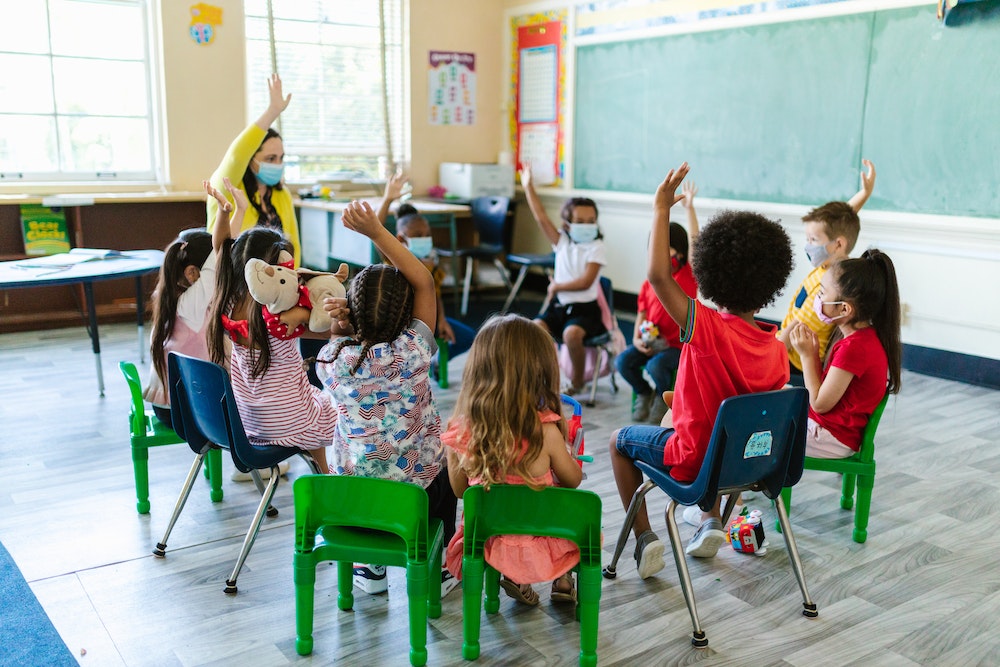As a teacher, you know the thrill of a new day and the satisfaction of preparing for it with care. You have lessons that will captivate your students, visual aids that will make their eyes light up, and a plan to keep them engaged from start to finish. But, let’s be real, sometimes things don’t go according to plan. One student refuses to come to the rug spot, a couple of students are chatting during your perfectly planned launch, and six students are looking anywhere but at the visual aid you slaved over. You try to redirect their attention, but a student retorts, “Why do I have to pay attention if Samantha isn’t?”
If this sounds familiar, don’t worry. You’re not alone. Classroom management is often overlooked in teacher training, but it’s a vital part of your teaching arsenal. A lack of strong classroom management can sink your lessons, disrupt your classroom culture, and leave you feeling powerless.
But, what if we told you that you have the power to turn things around? That you have the ability to unleash your classroom management superpowers and create an environment where students are eager to learn and follow your lead? In this article, we’ll show you how to do just that by diving into three key elements of effective classroom management. Get ready to transform your classroom into a productivity powerhouse!
Relationships

As a teacher, you hold the key to creating a positive, productive classroom environment that encourages students to engage, learn, and grow. One of the most powerful tools in your arsenal is the relationships you build with your students. By forming strong bonds with your students, you can cultivate a classroom culture where students feel valued, respected, and motivated to succeed.
The benefits of positive relationships in the classroom are clear and powerful. Students who have strong relationships with their teachers and school staff are more academically engaged, exhibit better social skills, and exhibit more positive behaviors. These benefits extend far beyond the classroom, setting students up for success in all aspects of their lives. With strong relationships, students feel a greater sense of belonging and connection to the school community, which in turn drives greater engagement and a more positive classroom environment.
Building strong relationships with your students is a journey, not a destination. It requires effort, patience, and a deep commitment to your students’ success. Whether it’s through active engagement, building trust and rapport, or simply being there for your students, you have the power to create positive, life-changing relationships with your students. By fostering a sense of belonging and connection, you can help your students thrive academically, personally, and socially, leading to a more effective classroom management and a brighter future for your students.
Consistency

Consistency starts with the teacher, who is responsible for setting clear expectations and enforcing rules. This includes delivering clear and direct instructions, modeling positive behaviors, and providing incentives for students who follow the rules. When students understand what is expected of them, they are more likely to comply.
In order to maintain consistency, it is important for teachers to consistently respond to student behavior. If a student misbehaves, the teacher should respond in the same manner every time. This helps students understand the consequences of their actions and encourages them to make positive choices. It also promotes a sense of fairness and equality in the classroom.
Another aspect of consistency in the classroom is structure. This includes having a daily routine, clear procedures for transitions, and well-defined rules for behavior. When students know what to expect, they are more likely to feel calm and focused, leading to a more productive learning environment.
In addition to promoting a positive classroom culture, consistency also helps to foster positive relationships between students and teachers. When students know what to expect from their teacher, they are more likely to trust and respect them. This trust and respect leads to a more collaborative and supportive classroom environment, where students are more likely to be engaged in learning.
Engagement

As educators, we know that a classroom filled with engaging lessons and activities is not only more enjoyable, but also has a profound impact on student behavior. When students are fully engaged in their studies, they are less likely to act out, display disruptive behavior, or lose focus. This is why engagement is crucial in shaping the classroom experience and student success.
Studies have shown that students who are engaged in their studies are more likely to perform better academically and form a stronger connection to their school. Engaging lessons tap into the interests and passions of students, making it easier for them to remain focused and on-task. When students are genuinely interested in what they are learning, they are less likely to be distracted or act out, and more likely to build confidence and increase their motivation to learn.
In addition to academic success, engaging lessons can also help to build positive relationships between students and teachers. When students are having fun and enjoying their lessons, they are more likely to form a positive relationship with their teacher. This connection can help to create a sense of community in the classroom and foster a positive, supportive learning environment. Teachers who create engaging lessons can also help to break down barriers between students and build positive relationships that can promote better behavior in the classroom.
In conclusion, effective classroom management requires a holistic approach that includes building strong relationships, maintaining consistency, and fostering engagement. By utilizing these three pillars, teachers can create a positive and productive learning environment where students feel valued, respected, and motivated to succeed. The power to transform your classroom is in your hands, and with effort, patience, and commitment, you can unleash your classroom management superpowers and unleash the full potential of your students. So let’s take the next step and create a classroom that inspires, motivates, and empowers your students to reach their greatest potential!


